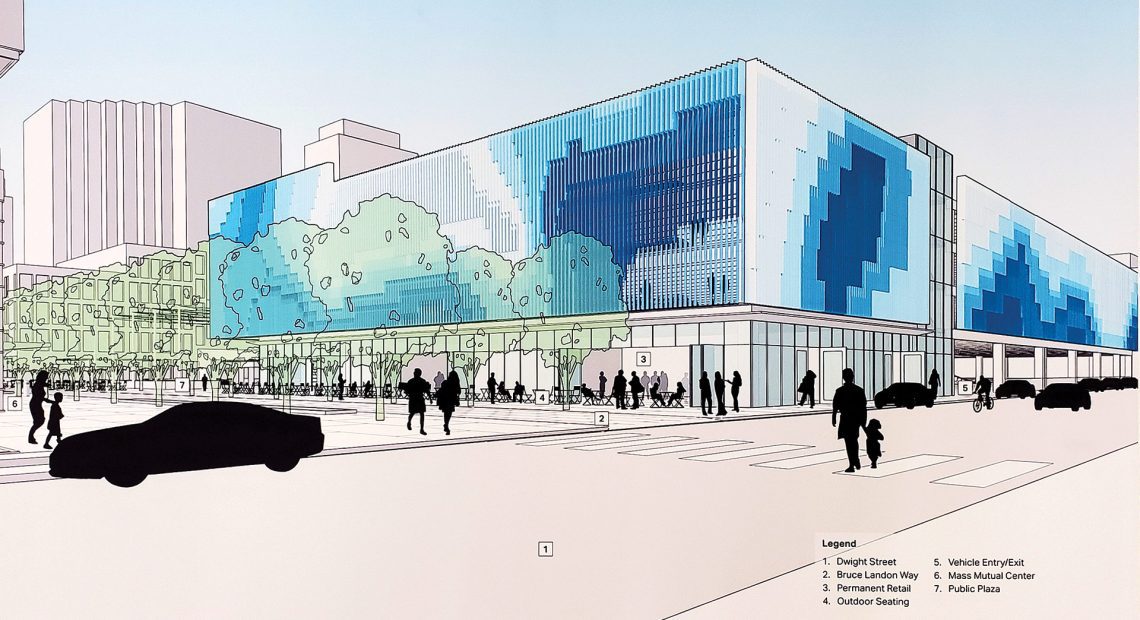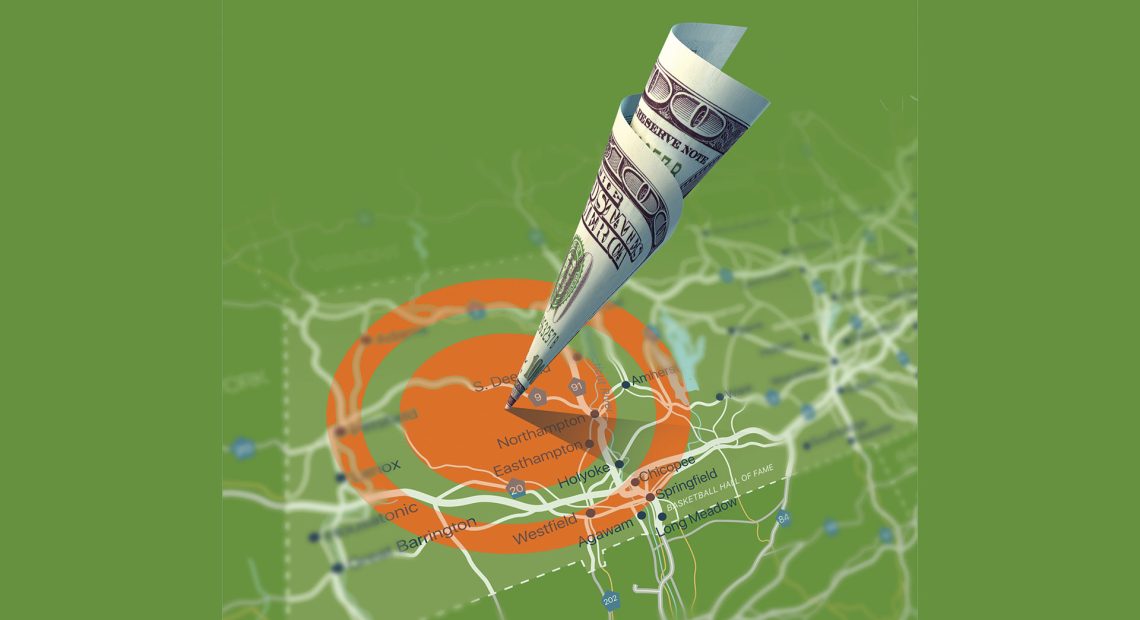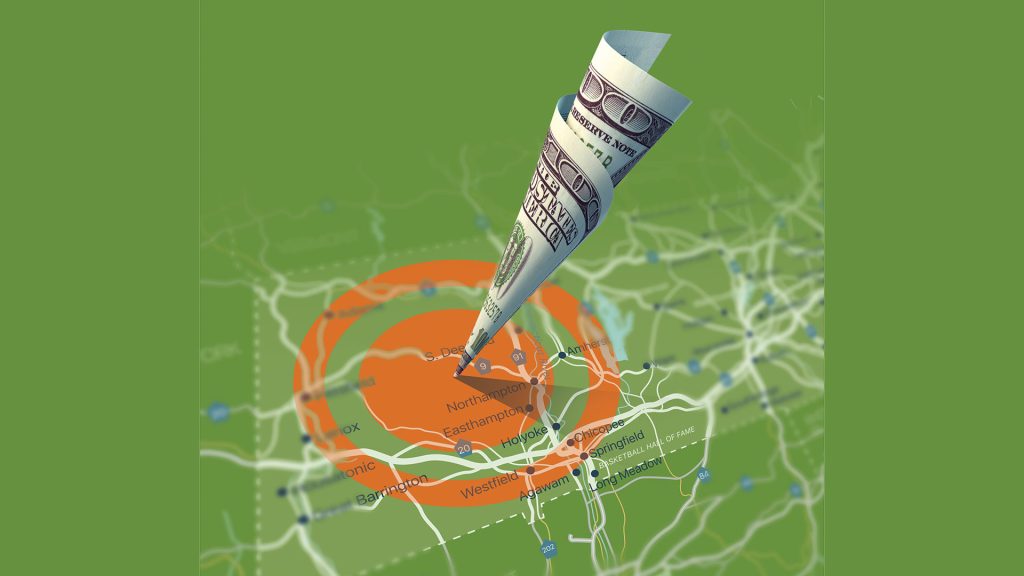Community Spotlight
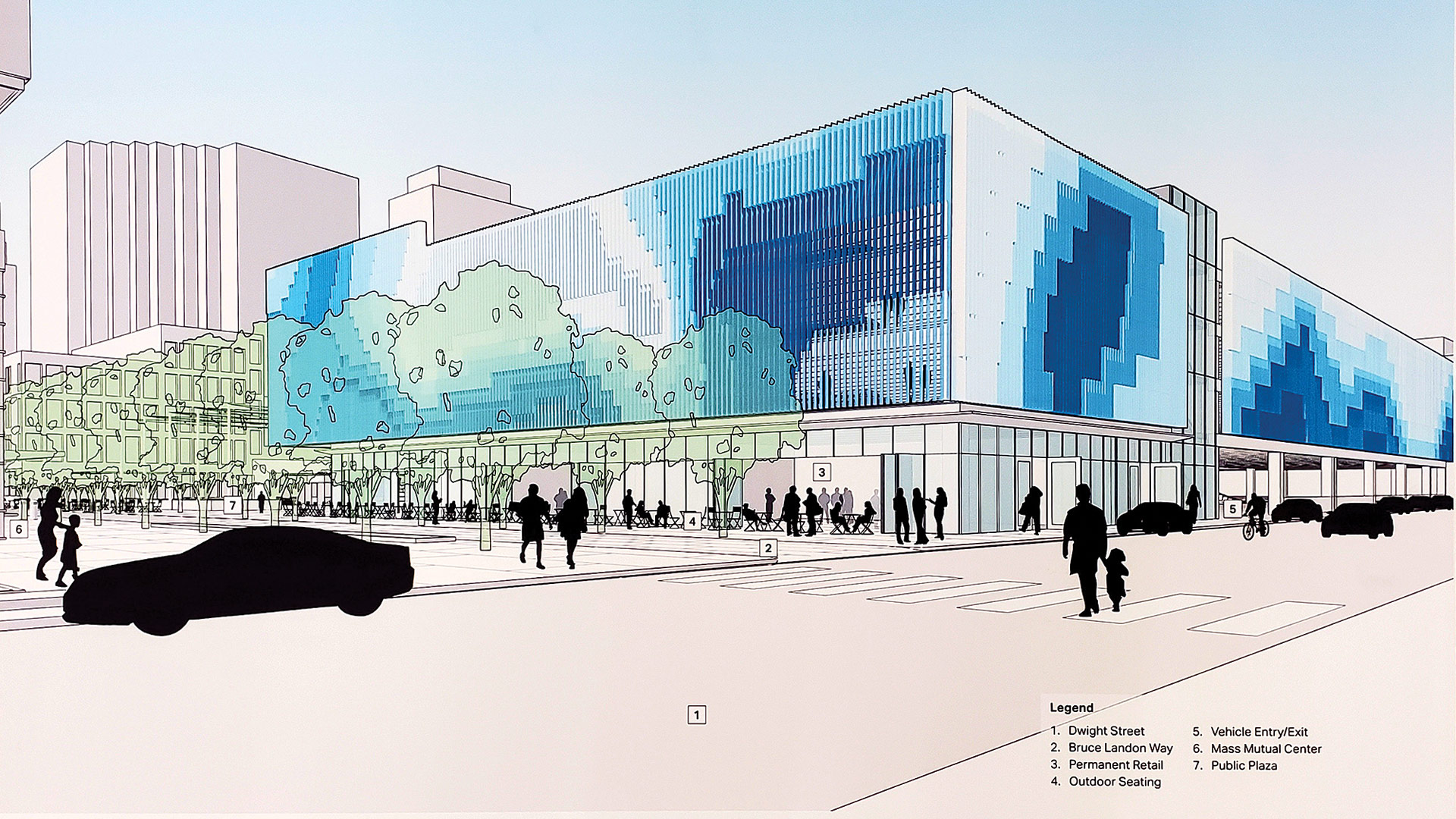
Architect’s rendering of the new parking garage soon to take shape in the city’s downtown.
‘Good traffic.’
That’s the phrase used by Springfield Mayor Domenic Sarno — who acknowledged that it is somewhat of an oxymoron — to describe traffic that is, well, positive in nature.
This would be traffic generated by vibrancy, by people coming into a city from somewhere else; traffic indicative of progress, as opposed to insufficient infrastructure, poor planning, or both.
Springfield saw quite a bit of this ‘good traffic’ prior to the pandemic, said Sarno, noting that it was generated by concerts at MGM Springfield’s venues, Thunderbirds games, conventions and college graduations at the MassMutual Center, special gatherings like the Winter Weekend staged by the Red Sox in early 2020, or any combination of the above. Sometimes, a random Friday night would be enough to generate such traffic.
And after two years of relative quiet in the wake of the pandemic, the ‘good traffic’ is starting to make a comeback, as is the city as a whole, said Sarno, Springfield’s longest-serving mayor, with 14 years in the corner office, adding that there is promise for a whole lot more in the months and years to come, as pieces to a puzzle come together — or back together, as the case may be.
“Before COVID hit, we had a tremendous amount of momentum going on in Springfield, not just in the downtown, but in all our neighborhoods,” he told BusinessWest. “I think we’re starting to get our mojo back.”
These pieces include everything from a resurgent Thunderbirds squad, which made it all the way the AHL finals after taking a full year off due to COVID, to new housing, including the long-delayed renovation of the former Court Square hotel; from a casino in comeback mode, buoyed by the promise of sports gambling, to the return of the Marriott brand downtown after more than $40 million in renovations to the property in Tower Square; from new restaurants and clubs on Worthington Street to a new parking garage soon to rise where an existing structure is being razed.
“Before COVID hit, we had a tremendous amount of momentum going on in Springfield, not just in the downtown, but in all our neighborhoods. I think we’re starting to get our mojo back.”
The “state-of-the-art and environmentally friendly parking garage,” as Sarno described it, will be part of a larger development in the area around the MassMutual Center, an initiative aimed at bringing people to that site before, during, and perhaps after events (more on that later).
The city still faces a number of stern challenges, many of them COVID-related, said Tim Sheehan, the city’s chief Development officer, citing such matters as the impact of remote work and hybrid schedules on downtown office buildings, an ongoing workforce crisis that has impacted in businesses in all sectors, and the pressing need to redevelop vacant or underutilized properties across Main Street from MGM Springfield.
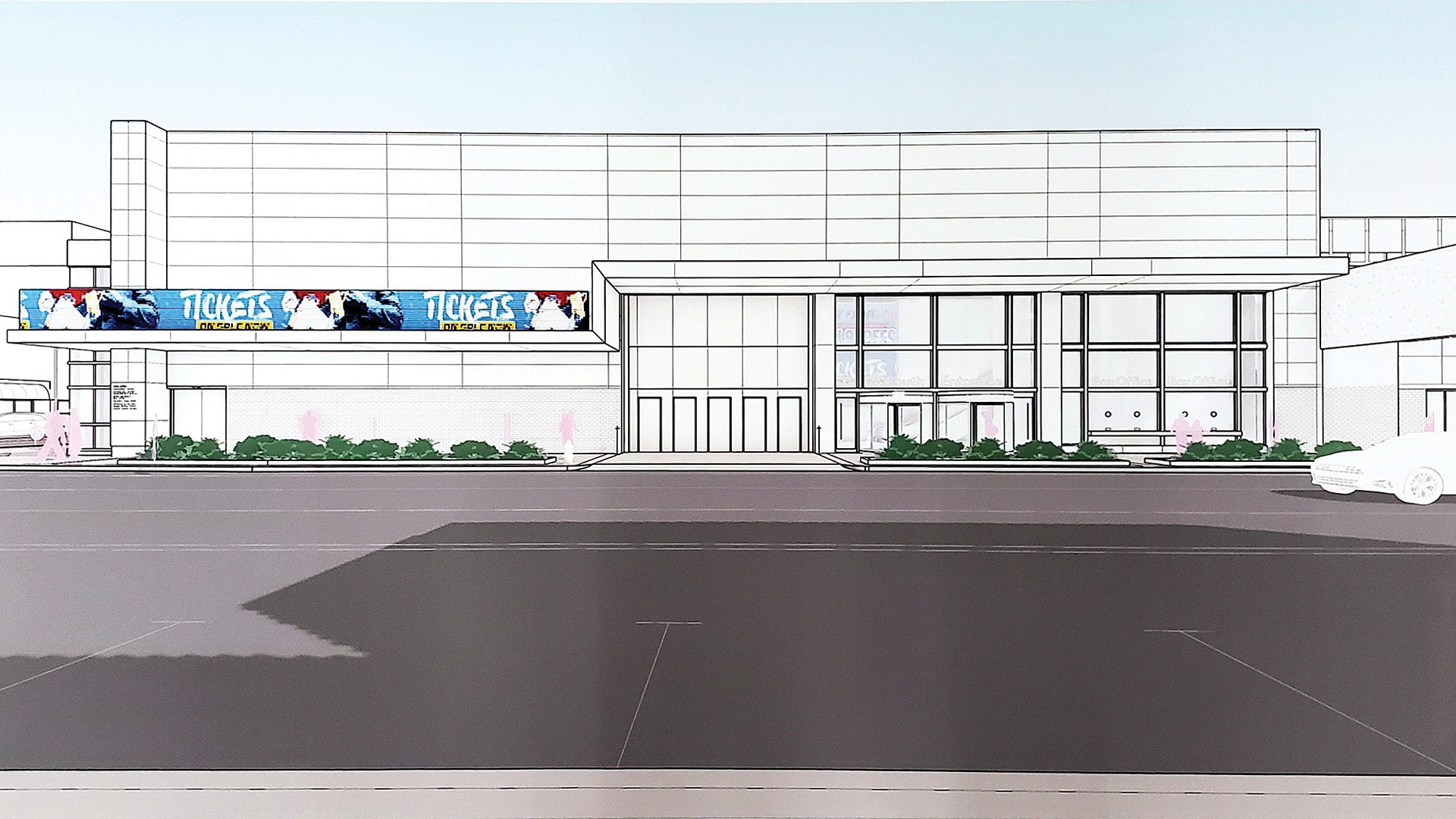
An architect’s rendering of the planned new entrance at the southwest corner of the MassMutual Center.
But he, like the mayor, sees progress on many fronts and, overall, a pronounced recovery from a pandemic that hit the city very hard.
“We’re seeing many positive signs that Springfield is making its way back from the pandemic and the many challenges it created,” said Sheehan, who cited, among many yardsticks of momentum, a long line to get a table at Wahlburgers during a recent visit. “And we’re seeing these signs not only in the downtown, but the neighborhoods as well.”
Sarno agreed. He said that, over his lengthy tenure as mayor, the city has coped with a number of challenges and crises, from the June 2011 tornado to the November 2012 natural-gas explosion. But COVID has been different, and it has tested the city and its business community in many different ways.
“It’s been a difficult two years; the pandemic threw everyone a huge curveball,” he explained, adding that city leaders were trying to respond to an unprecedented health crisis while also making good use of state and especially federal money to help small businesses keep the lights on.
“My team has been tested, and, true, it’s been through a lot of disasters before,” he went on. “But this was like shadowboxing — it was surreal.”
COVID isn’t over, and challenges for small businesses remain, but in many respects, the city can get back to business, and it is doing just that.
For this, the latest installment of its Community Spotlight series, BusinessWest takes an in-depth look at Springfield, its ongoing bounce-back from COVID, and, yes, the return of that ‘good traffic.’
State of the City
It was affectionately known as the ‘dog and pony show.’
That’s what some called an annual gathering, orchestrated by the city in conjunction with the Springfield Regional Chamber, at which officials gave what amounted to a progress report on the city, with a large dollar amount attached to all the various economic-development and infrastructure projects — from MGM Springfield to the renovation of Union Station to the reconstruction of the I-91 viaduct — that were in progress or on the drawing board.
The city hasn’t staged one of these sessions in several years, mostly due to COVID, said Sarno, but one is being planned, probably for early next year. And there will be quite a bit to talk about, he went on, hinting at new developments at sites ranging from Union Station to the former Municipal Hospital on State Street, while offering what amounts to a preview of that gathering.
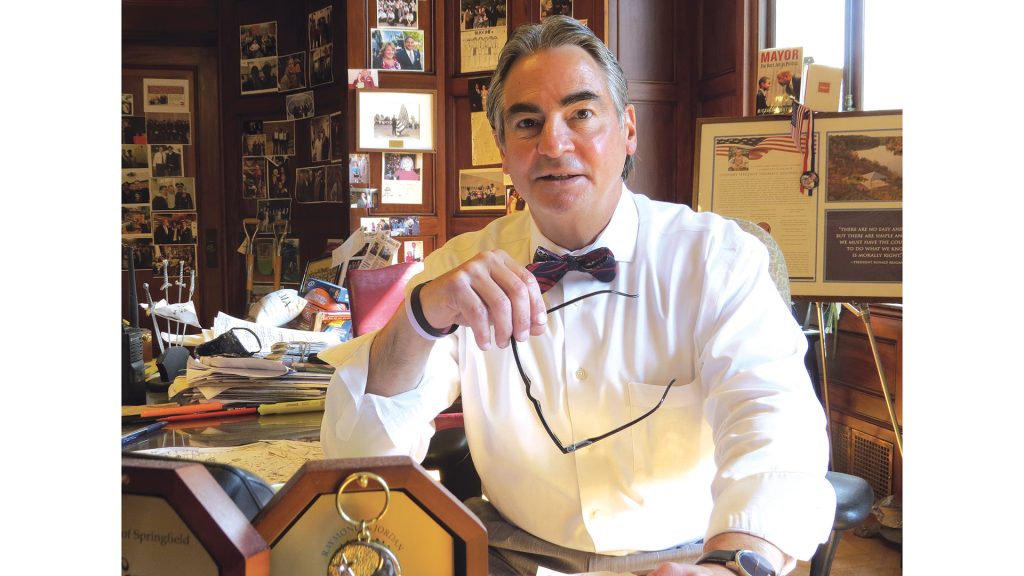
Mayor Domenic Sarno sees progress on many fronts in Springfield after a tumultuous past couple of years.
And he started with the new, 1,000-space parking garage, which he and Sheehan anticipate will be much more than that.
Indeed, plans for the site include ‘activation’ — that’s a word you hear often when it comes to properties in the downtown — of a surface parking lot next to the present (and future) garage, and, overall, creation of an atmosphere similar, said the mayor, to what is seen at Fenway Park in Boston on game nights.
“Bruce Landon Way will be activated, and many times, it will be shut down,” said Sheehan, adding that the current surface lot, and Bruce Landon Way itself, will become extensions of the MassMutual Center.
“They can have their events literally flowing out to Bruce Landon Way, creating much more activation within the downtown,” he explained. “And it will be utilized for pre- and post-event programming.”
Elaborating, he said the current surface lot will be public space that the Convention Center Authority will lease out for various kinds of functions, bringing more people downtown.
Meanwhile, a new entrance to the MassMutual Center will be added at the corner of State and Main streets, providing the facility with two points of entry and, with this new addition, what the mayor likened to a “Broadway marquee,” a much stronger bridge to MGM Springfield and other businesses south of the arena.
“One of the critical elements of our master plan involves finding ways to activate both of our anchors downtown — MGM Springfield and the convention center itself,” said Sheehan. “And one critical missing piece to that was always the southern entrance to the MassMutual Center, and now, that’s being addressed.”
That new entrance may help spur development of several vacant or underutilized properties across Main Street from the MGM casino, said Sarno, adding that requests for proposals to redevelop these properties, now under city control, will be issued soon.

Dinesh Patel, seen here in the lobby of the soon-to-open Marriott in downtown Springfield, says the facility was designed to reflect the history and culture of the city.
These developments, coupled with the ongoing renovation of 31 Elm St., the former Court Square Hotel, into market-rate apartments due to be ready for occupancy in roughly a year, are expected to create more interest in Springfield and its downtown within the development community, said the mayor, noting, again, that needed pieces are coming together.
These pieces include housing, which will create a larger population of people living in the downtown; restaurants and other hospitality-related businesses, a broad category that includes MGM Springfield, restaurants, and the Thunderbirds; and a vibrant business community.
“One of the critical elements of our master plan involves finding ways to activate both of our anchors downtown — MGM Springfield and the convention center itself. And one critical missing piece to that was always the southern entrance to the MassMutual Center, and now, that’s being addressed.”
Individual pieces coming into place include not only 31 Elm, but the recently opened housing in the former Willys-Overland building on Chestnut Street; some new restaurants and clubs on and around Worthington Street, including Dewey’s Lounge, the Del Raye, and Jackalope; and the planned new Big Y supermarket, which will address a recognized need in what has long been recognized as a food desert.
Staying Power
Then, there’s Tower Square and the Marriott flag that has been returned to the hotel several years after it was lost.
As he talked with BusinessWest about the two years worth of renovations to that hotel and planned reopening of the facility, Dinesh Patel showed off finishing-touch work in several areas, including the lobby, the fitness center, the pool room, and some of the meeting rooms.
He also opened the door the large ballroom, revealing a training session for dozens of the more than 180 people expected to be hired before the facility opens its doors. Like most of the renovation work itself, conducted at the height of the pandemic and its aftermath amid supply-chain issues and soaring prices for many products and materials, the hiring process has been a stern challenge as qualified help remains in short supply.
But for Patel and partner Mid Vitta, whose work to reclaim the Marriott flag — and reinvent Tower Square — earned them BusinessWest’s Top Entrepreneur award for 2022, it has been what amounts to a labor of love. The two saw an opportunity in the once-thriving but then-challenged retail and office complex in the heart of downtown, and have made the most of it, finding some imaginative reuse of many spaces. These include the recruitment of the YMCA, which has brought its childcare and fitness-center operations, as well as its administrative offices, to Tower Square. It also includes that new and decidedly different kind of Big Y store in space formerly occupied by CVS.
As for the hotel, which will open in time for the induction ceremonies for the Basketball Hall of Fame and the Big E, Patel said the timing is good for the property to come back online.
“Gas prices are coming down, and people are traveling again,” he said. “They want to get out and go places; we see a lot of pent-up demand.”
As he offered a tour of the nearly-ready facility, Patel noted the many nods to Springfield, its history, and its culture, from the basketball-themed art in the fitness center to the wall coverings depicting blueprints of noted inventions that happened in Springfield (from the monkey wrench to rail cars) to the many photographs of ‘old Springfield’ found on the walls of the stairs leading to the meeting facilities on the sixth floor.
“We wanted to tell the story of Springfield,” Patel said. “And we tell that story all through the hotel.”
Increasingly, that story is one of progress and recovery from COVID, not only in the downtown, where much of the interest is focused, but in many other neighborhoods as well, said both Sarno and Sheehan, noting that neighborhood plans have been developed for many different sections of the city that address everything from sidewalks to lighting to beautification, with gathered suggestions then forwarded to an ARPA advisory committee.
Overall, new schools and libraries are being built, infrastructure improvements are being undertaken, and businesses continue to be supported as they face the lingering effects of COVID through initiatives such as the Prime the Pump program, which provided grants of various sizes to businesses in need.
The city has received nearly $124 million in ARPA (American Rescue Plan Act) money to date, and it has distributed more than $50 million, including $4 million dispensed in the seventh round to date, earlier this month. Those funds went to small businesses, new businesses, nonprofits, neighborhoods, housing, capital projects, and direct financial assistance to households and seniors, said Sarno, adding that that the basic strategy has been put that money to use in ways where the impact can be dramatic and immediate.
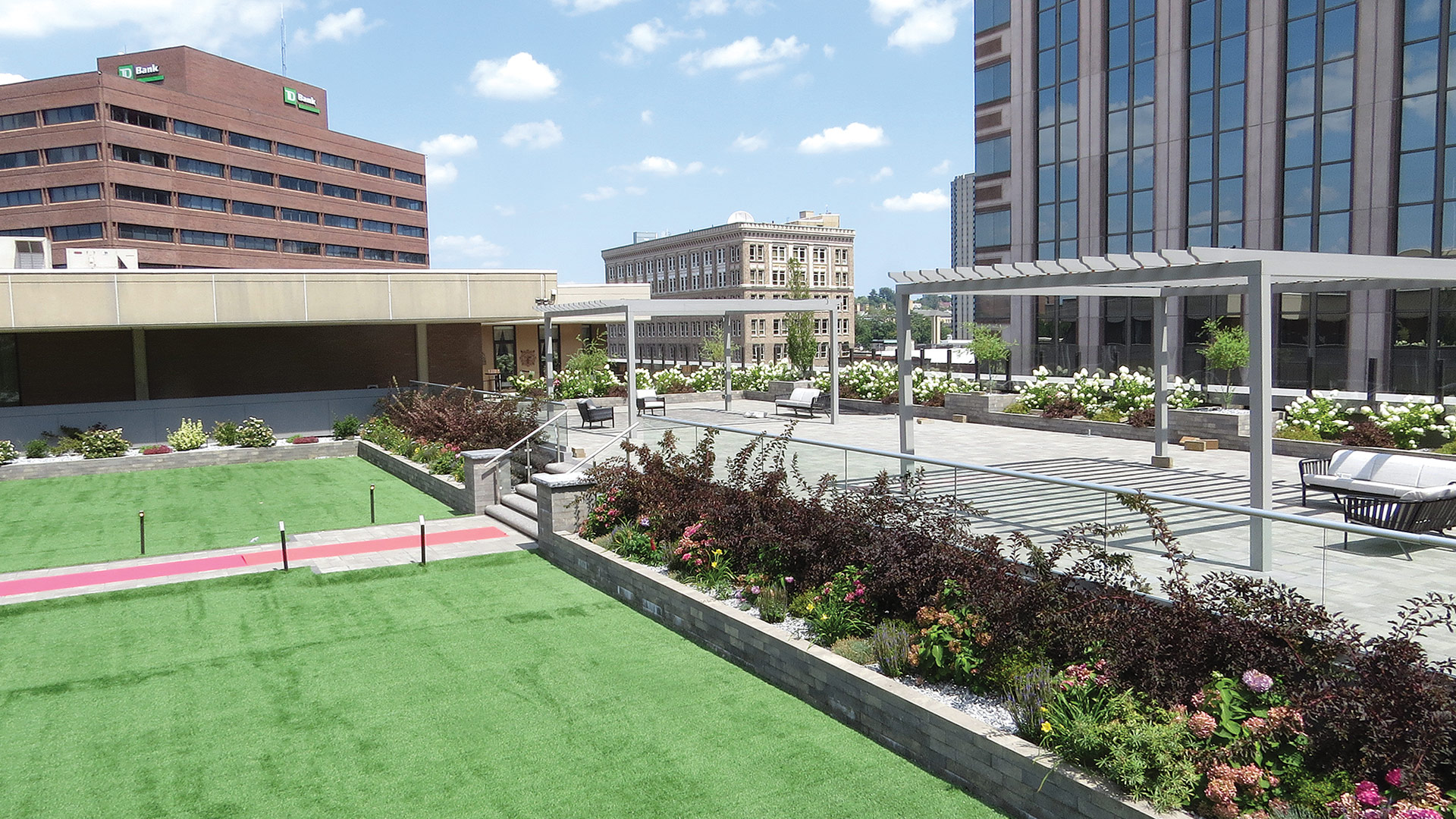
The renovated outdoor space off the sixth-floor meeting area is one of the highlights of the soon-to-open Marriott in downtown Springfield.
“The majority of the monies that have been distributed have really helped a lot of minority-owned businesses and women-owned businesses,” he explained. “It’s a very eclectic mix, from mom-and-pop businesses to larger ventures to direct assistance.”
There have been efforts in the broad category of workforce development as well, he went on, adding that businesses of all kinds continue to be impacted by an ultra-tight labor market, just as many are starting to see business pick up again.
Overall, there have been more than 30 meetings conducted with residents and business owners in attendance, said the mayor, adding that these listening sessions were staged to gain direct feedback on how federal COVID relief money can best be spent in Springfield.
Identified needs and challenges range from workforce issues to childcare to transportation, said Sheehan, adding that what has come from these sessions is dialogue, which has often led to action, on how the city can collaborate with other groups and agencies to address these matters. And it has been a very fruitful learning experience.
“It created an opportunity to look at things differently,” he noted. “And I do think it has caused people to look at how we can work collaboratively to solve some pretty significant problems.”
Bottom Line
To motorists who are stuck in it, there is really no such thing as ‘good traffic.’
But while drivers don’t use that phrase, elected officials and economic-development leaders certainly do. As Sarno told BusinessWest, good traffic is a barometer of a city’s vibrancy, a measure of whether, and to what degree, a community has become a destination.
For a long while, Springfield didn’t have much, if any, of this ‘good traffic,’ and then, in the 18 months or so before COVID, it did. The pandemic and its many side effects took much of that traffic away, but there are many signs that it’s back and here to stay.
As the mayor said, the city is starting to get its mojo back.
George O’Brien can be reached at [email protected]



